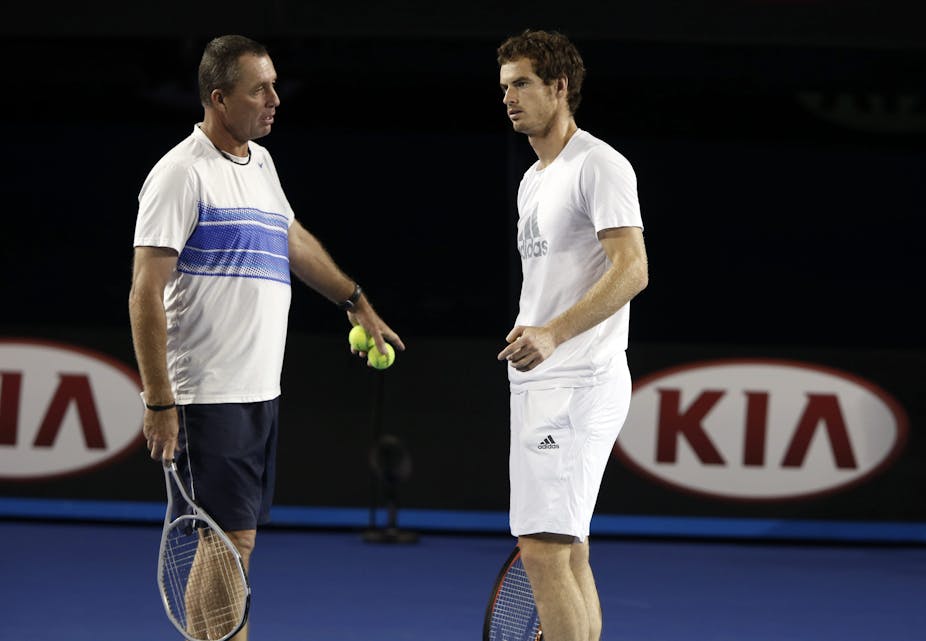Every January the Australian Open attracts the world’s best tennis players to Melbourne in a bid to become champion of the Asia-Pacific Grand Slam.
While the players are undoubtedly the main draw card, they also bring with them a team of highly trained individuals to support their goal of being crowned champion. Chief among them is, of course, their coach – a critical ingredient in a player development and success.
Countless hours are devoted to attaining the expertise needed to become a high performance coach, not unlike the investment made by players in reaching the top of their game.
So what exactly sets an expert coach apart?
Watch and (help others to) learn
There are many facets to coaching but one of the primary responsibilities is guiding player development through technique analysis and feedback.
Visit the practice courts to watch any of the players and you will no doubt see their coach out on court, scrutinising their player’s performance. It is the coach’s job to view the player’s technique, analyse critical features, detect errors and provide timely and accurate feedback so the player’s performance can be improved.
Even slight changes in ball toss or trunk rotation – which may be imperceptible to the untrained eye – can have a significant effect on speed, accuracy and consistency in a player’s game.
Consequently, the skill of observation is critical for coaches and a key to their success. What the coach can or can’t “see” in a player’s technique directly influences the feedback they can provide a player.

Like coach, like player
What a coach “sees” are the kinematics of action – how the player’s limbs are positioned and coordinated in space to produce the desired movement outcome (ball speed and direction).
An enhanced understanding or ability to interpret the kinematics of an action allows expert coaches to make informed, accurate and often quick decisions. It is a quality that separates them from other less-skilled coaches.
This same concept of expert interpretation of movement patterns is evident in players as well – when returning serve, for instance. The best receivers in the world appear to have all the time in the world to get a serve back over the net.
This advantage is borne out of superior perceptual skills to interpret an opponent’s serve mechanics, which ultimately gives them more time to react.
Through research we know that expert tennis players are better at perceiving and interpreting an opponent’s body movements prior to ball impact during the serve, allowing them to accurately anticipate shot direction and produce a successful response.
Like expert players, expert coaches are better equipped to perceive and interpret important kinematic information, and then to use this information to determine whether a change in technique is required.
What we did
Through a series of experiments (the results of which haven’t yet been published) analysing the gaze behaviour of coaches we have discovered that when watching a player’s serve, expert coaches tend to focus on proximal areas (those close to the midline) such as the trunk. Novices spend more time viewing the racquet and ball motion.
We analysed the coaches’ gaze using a lightweight pair of glasses with two small cameras, one positioned to capture the scene (what the coach is seeing) and one to capture the coach’s eye.
When combined, the two cameras allow us to see exactly where the coach is looking.
It is well known that the ability to interpret and use earlier occurring information (“proximal kinematics”) is a key contributor to expertise. Proximal segments (such as the trunk) are critically important as they form the foundation of movement. They also typically move slower so they are easier to see than distal segments such as the racquet.
Putting it all together
With a greater understanding of the kinetic chain – a sequence of movements, usually proximal to distal used to create an effective tennis serve – expert coaches are able to identify problems with the player’s game.
For example an expert coach will identify low clearance over the net then use their superior knowledge of kinematics to pinpoint specific segments – poor leg drive perhaps – which are contributing to or causing the particular problem.
Coaches may not always be aware of how they perceive kinematics, or how sensitive they are to seeing changes in technique but, like players, they operate best when performing judgements automatically, or without conscious processing.
An increased understanding of kinematics is also what allows coaches to prescribe exercises or drills aimed at fixing specific technical issues contributing to larger problems in a player’s game. It’s this eye for detail that ultimately leads to the production of champion players.
Reckon all of that sounds easy? Try analysing some thundering serves during this year’s Australian Open and explain why they did or didn’t hit their mark.

